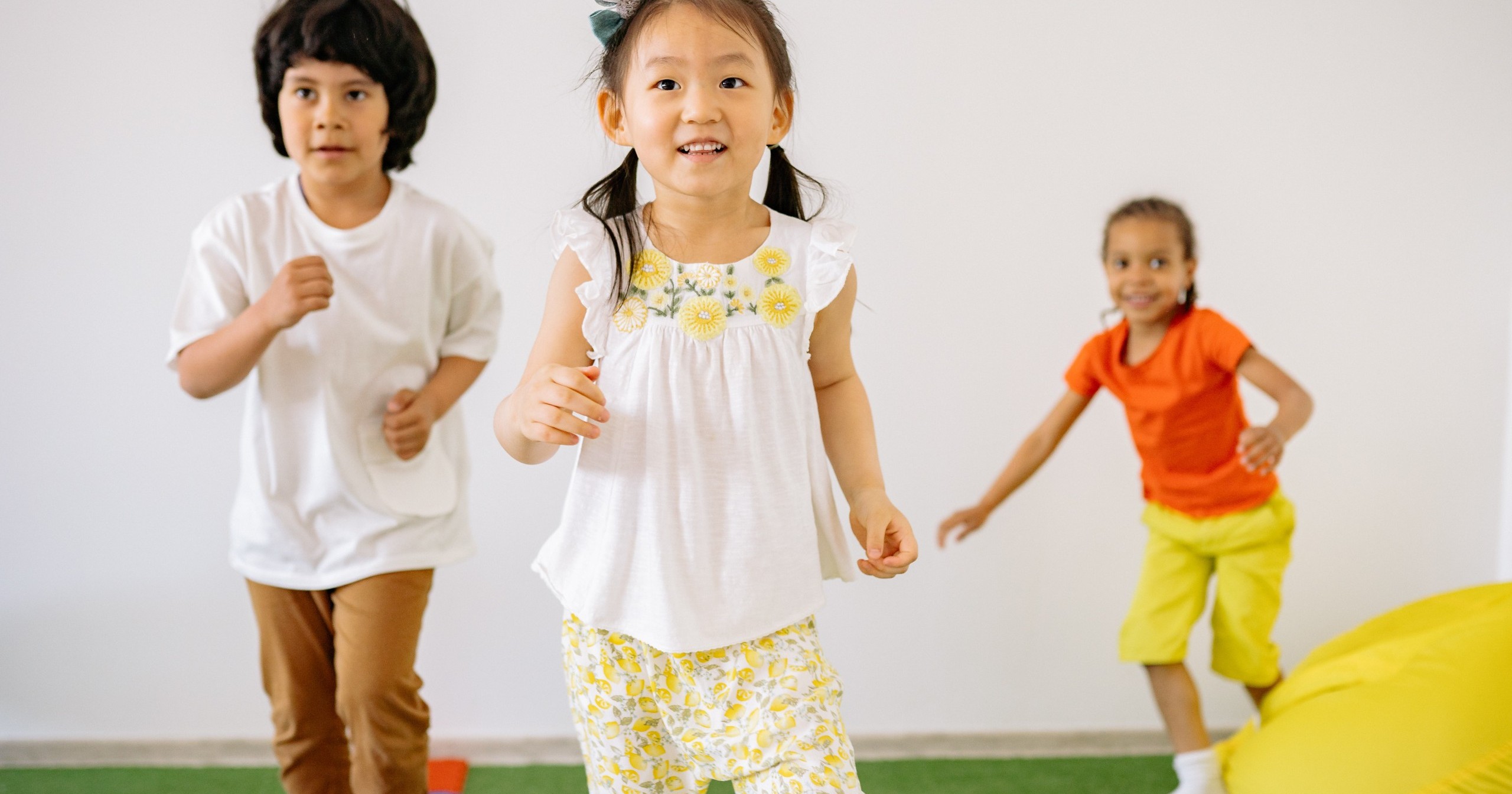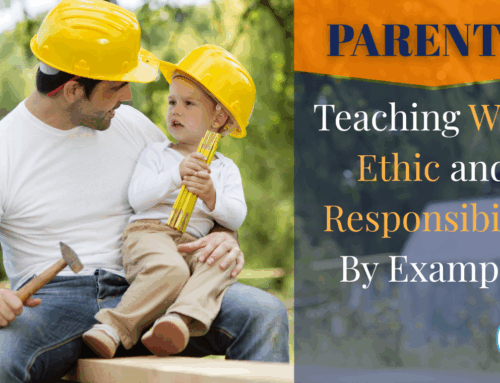
Imagine you’re back in school.
It’s your hardest school year ever. Your feet twitch, energy coursing through your legs. You wish you could just take a few minutes to walk around a bit, or maybe even run. Perhaps you’re frustrated or discouraged. Or maybe you just can’t seem to concentrate. Are you anxious about something?
You sit at your desk, trying to focus. You roll your pencil between your fingers and attempt to force your ears and brain to work together. What did your teacher just say? The workbook before you seems hazy, and you give your head a gentle shake to reset your eyes.
Suddenly, your teacher’s tone changes and they announce, “Ok! Everybody stand up. Take five minutes and move those arms! Go to a student across the room from you and say hello, or say an encouraging word. Jump up and down in place, or find enough room to do some stretches!”
Imagine you’re in that classroom. How has your mood changed? Has your blood flow increased? What’s your pulse doing? Has your focus sharpened?
Mood, behavior, and stress levels are affected by physical movement. If your mood automatically brightened and your entire outlook changed through this hypothetical teacher’s call to action, imagine how children could feel all across American classrooms in real life.
Children Are Physical
Children are designed to move.
They have an innate desire to run, walk, climb, and dance. You’ll find them twitching, wiggling, and squirming when all else fails. For the most part, the younger they are, the more vivaciously their energy pulses and the greater their impulse is to move.
Peter Grey, Ph.D. of Psychology Today, notes, “Children explore and play, freely, in ways designed to learn about the physical and social world in which they are developing.”
National recommendations for children suggest that they should have vigorous physical activity for at least an hour a day, amounting to 10,000 steps or more. The National Education Foundation explains that this is often not the case.
“Physical Education (PE) isn’t the only class that should emphasize movement! Whatever the grade or subject area, every teacher can effectively incorporate movement into the school day. Most students take fewer than 5,000 steps during a non-PE school day. (That’s including one recess!)”
Children are woefully behind on the healthy physical activity threshold every day.
This is a tremendous problem with real-life effects. We must recognize a child’s need for physical activity and stimulation in a country with rising childhood ADHD rates and young students with underdeveloped sensory systems. Children who aren’t moving often enough tend to lose focus and get into trouble for not paying attention.
“Fidgeting is a real problem. It is a strong indicator that children are not getting enough movement throughout the day. We need to fix the underlying issue,” HuffPost examines the issue. “Recess times need to be extended, and kids should be playing outside as soon as they get home from school. Twenty minutes of movement a day is not enough! They need hours of play outdoors in order to establish a healthy sensory system and to support higher-level attention and learning in the classroom.”
While outdoor play at home is a practical—and desperately needed—addition, many wonder if there is a way to promote a healthier academic lifestyle at school.
Movement in School
“Groups such as the National Association of Physical Literacy tout the importance of teaching kids to move while they’re young so that they will make movement part of their lives when they grow up. It all seems like a no-brainer….The challenge, though, is persuading school administrations to consistently make time for physical activity when they are pressed to meet stringent academic requirements and find the money to pay for some of the training.”
The assessment above is an excerpt from CNN addressing how difficult it is to change what conventional classroom time looks like for American students.
Implementing protocols to combat the lack of physical activity for kids seems like it should be an easy task. However, American schools are largely under-equipped to solve this problem.
The Conversation points out that, while we’ve assessed office space for its effect on America’s obesity epidemic, heart disease, and other common medical ailments, the workspace for the next generation hasn’t received the same scrutiny.
Thankfully, science has made some progress toward this goal.
PubMed.gov examined a study out of Texas focused on evaluating stand-biased classrooms, where the children work in a standing position in contrast to students who spend their days sitting at a desk. The results echoed those of an earlier study that evaluated how “moving schools” impacted students’ physical well-being. The results indicated that having students spend at least some of their classroom time standing was beneficial in both cases.
Currently, many teachers implement small movement breaks into their students’ daily routine, but the National Education Association (NEA) suggests that it should become a core attribute of American schools. “Once physical activity is woven into the daily routine, it can become part of the classroom culture. Students and teachers will feel the positive effects of being active.”
Practical Steps
How can students become more active on a regular basis? Schools and parents alike can focus on a few practical steps to encourage kids to utilize their natural impulses and expend that built-in energy!
Schools
- GoNoodle – CNN reports that four out of five elementary schools encourage young students to get physical through GoNoodle. “GoNoodle tries to use entertaining videos, often about two minutes in length, that will get kids to move around and then either get back to their schoolwork or go off and play with friends.”
- Get Creative With the Workspace – Earlier, we noted that studies have examined creative or “moving” classrooms for students. The Conversation suggests this approach. “Classrooms with stand-biased desks are part of what we began to call an Activity Permissive Learning Environment (APLE), which means that teachers don’t tell children to ‘sit down,’ ‘sit still,’ or ‘don’t move around’ during class. Instead, they encourage movement such as standing, rocking, fidgeting, and walking….New approaches for addressing physical inactivity that are in harmony with children’s natural habits, tendencies, and engagement could be the way to go.”
- Integrate Movement into Lessons – Teach 4 The Heart offers tips for getting students physically involved in their lessons. “…when doing a punctuation review lesson, kids can clap for a period, stomp for a question mark, and stand up and make a ‘pop’ noise for an exclamation point.” Another strategy is to use areas of the room as “answer zones” during a Q&A session, letting students move to different parts of the room to signify different answers. Adding role-play can also be a fun and energetic tactic to encourage students to move around, Teach 4 The Heart shares.
- Count the Steps – Technology can be a valuable tool in combating a sedentary school experience. The NEA suggests, “When students arrive at school, keep count of their steps using inexpensive pedometers or phones (for older students). Tracking steps is motivating and can be incorporated into the classroom and reinforced at home. Help students set goals, track steps, crunch numbers, chart progress, and more.”
- Take It Outside – Another practical idea from the NEA includes taking a short break and enjoying the outdoors. “Students enjoy the change of scenery and benefit from fresh air. Outdoor space allows for plenty of gross motor movement. Physical activity should become an expectation during the school day.”
Parents
While kids can spend up to seven hours a day at school, not including extracurricular activities, the time spent at home can seriously impact their health and their success with homework. Just like at school, movement and exercise are key. Parents can work in tandem with their child’s school to help their child avoid a sedentary lifestyle while at home.
- Get Them Outside – Encourage your kids to enjoy all of the wonders that the outdoors can offer! Harvard Health Publishing states, “Children…can certainly exercise indoors, but sending them outdoors—especially with something like a ball or a bike—encourages active play, which is really the best exercise for children.”
- Participate With Your Child – When your kid sees that physical activity is important to you, it sets a good example. HealthyChildren.org offers some suggestions for activities you can enjoy together. “Help them learn a new sport or another physical activity. Or just have fun together by going for a walk, hike, or bike ride.”
- Integrate Technology – The Office of Disease Prevention and Health Promotion offers parents an interactive activity tracker to help ensure kids get the physical activity they need. “Could they [kids] get a little more active in the morning? What about after school? Remember, a little here and a little there—it all adds up throughout the day.”
Benefits Abound
Physical activity is a must for children. It affects their emotions, mental state, and physical well-being. Academic success can also be linked to physical activity.
According to The National Association of Physical Literacy, “87% of students who use physical literacy in their daily life report being more successful socially, emotionally and academically. Infusing physical literacy into the school day can also improve academic performance and decrease behavioral issues.”
The American Academy of Pediatrics makes the connection between physical activity and several positive physiological effects, including:
- Cognitive function
- Enhanced angiogenesis
- Increased oxygen saturation
- Increased glucose delivery
- Improved cerebral blood flow,
- Increased neurotransmitter levels
- Brain function
Physical activity is a natural childhood function, so the vital connection between proper movement and enhanced developmental achievements is no real surprise. The challenge continues to be how to effectively incorporate an abundance of movement in an already-crowded education schedule.
Incorporating physical activity into classroom and home culture in creative and innovative ways is just the starting point.





[…] the most substantiated argument for P.E. classes is that, when properly enforced, they can promote healthy movement during an otherwise fairly sedentary day. Numerous studies prove that exercise holds a multitude of health benefits for children. It has […]
[…] Include physical activity, not just throughout the day, but in the middle of whatever you’re doing at the moment. If your […]
[…] activity, too! Especially if you can’t find the time and effort once school is out for the day, include your class and get physical together. You can do more conventional exercises or get creative and fun! The point is to get your blood […]
[…] Incorporating Movement Into the Classroom […]
[…] a five minute walk in the parking lot at break? Or doing stretches at your desk? Getting your class to do some movements with you to revitalize energy, theirs and yours? If you do a little brainstorming, you’re sure to come up […]
[…] a five minute walk in the parking lot at break? Or doing stretches at your desk? Getting your class to do some movements with you to revitalize energy, theirs and yours? If you do a little brainstorming, you’re sure to come up […]
[…] Incorporating Movement Into the Classroom […]
[…] Include physical activity, not just throughout the day, but in the middle of whatever you’re doing at the moment. If your […]
[…] the most substantiated argument for P.E. classes is that, when properly enforced, they can promote healthy movement during an otherwise fairly sedentary day. Numerous studies prove that exercise holds a multitude of health benefits for children. It has […]
Hello current teachers, I am studying to become an elementary school classroom teacher and am interested in knowing more about activities that include learning while moving. I think movement is so important and I would love some ideas on how to integrate movement and learning. I appreciate any thoughts!